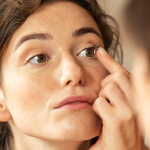Optometry Australia is reminding the public to take precautions to protect their eyesight during the upcoming total solar eclipse at 11:29 AWST on Thursday 20 April in Ningaloo, Western Australia. At the same time the rest of Australia will experience a partial eclipse, and while these are rare and spectacular events, viewing an eclipse directly can be extremely dangerous if not done properly.
Luke Arundel, optometrist and Chief Clinical Officer at Optometry Australia said that “looking at the sun, even during a solar eclipse, can cause serious and permanent damage to the eyes.
“Just think about how the lens in a magnifying glass can be used to focus sunlight to start a fire – the lens inside our eyes is many times more powerful than a magnifying glass and we want to ensure people don’t permanently damage their retina – the very delicate, light sensitive layer at the back of the eye.
“While it generates natural curiosity to have such a rare phenomenon coming up next week, it is important for people to understand the potential dangers that can come from looking directly at the sun. It is especially important for children to be protected, as they are likely to be less aware of the dangers and their young eyes are particularly vulnerable to damage,” Mr Arundel added.
The Astronomical Society of Australia has created a comprehensive guide on how to view the eclipse in a safe way. The guide states that the only safe way to look directly at the uneclipsed, partially eclipsed or annularly eclipsed sun is through special-purpose solar filters, such as ‘eclipse glasses’ or handheld solar viewers. It adds that homemade filters or ordinary sunglasses, even very dark ones, are not safe for looking at the sun; they transmit thousands of times too much sunlight.
“We urge anyone interested in this eclipse to familiarise themselves with the guide created by the ASA, and to check their list of manufacturers of solar viewers verified to be compliant with the ISO 12312-2 international safety standard, ass this has been adopted in Australia. It is also important that eclipse glasses are not scratched or damaged and children need to be very closely supervised”, Mr Arundel concluded.
An alternative to directly viewing the eclipse (and an option for anyone unable to obtain eclipse glasses which meet the safety standard) is to use an indirect viewing technique: simply make a ~1mm hole in in a large card and project the image onto a surface ~1m away.
A solar eclipse occurs when the moon passes between the sun and the Earth, casting a shadow on the Earth’s surface. During a solar eclipse, the moon appears to cover the sun partially or completely, creating a stunning visual display. The upcoming solar eclipse in Ningaloo will be a total eclipse lasting for 54 seconds, with the rest of the country experiencing a partial eclipse where the moon blocks part of the sun’s surface. Australia’s last total solar eclipse was over Cairns in 2012 and the next will pass over Sydney in 2028.
Optometry Australia recommends that people who experience any eye discomfort, irritation, or vision problems to seek immediate attention from their local optometrist.
More information can be found at https://eclipse.asa.astronomy.org.au/how-to-view/


